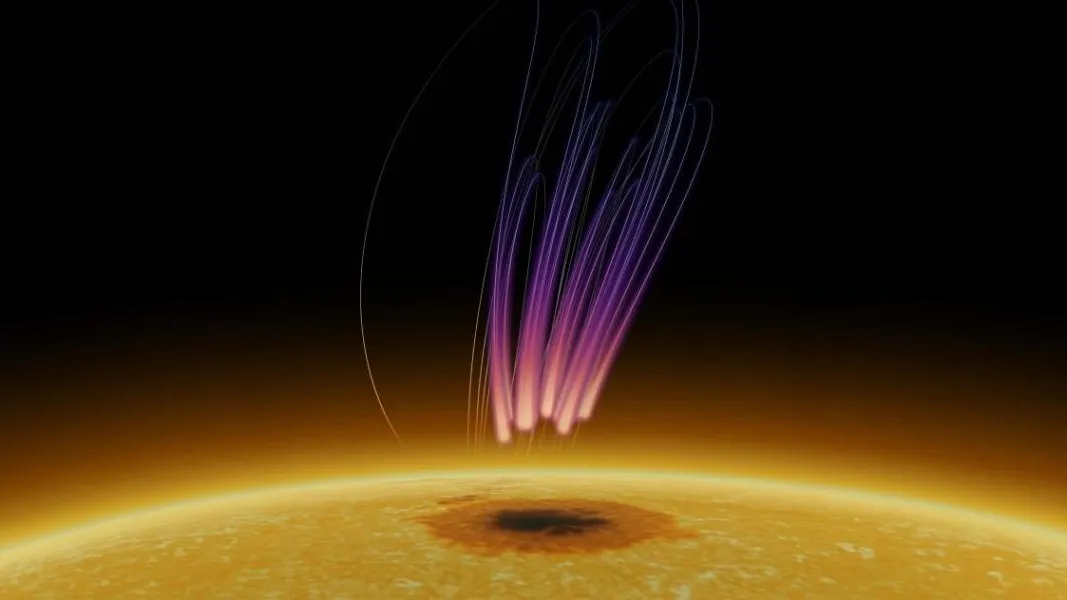In a groundbreaking revelation, astronomers detect mesmerizing radio wave displays linked to electron acceleration through a sunspot, challenging our understanding of solar magnetic processes.
Bengaluru, NFAPost: In a scientific breakthrough, researchers have observed a spectacular “aurora-like” phenomenon manifested as crackling radio waves above the sun’s surface, resembling the Northern Lights on Earth. This unprecedented solar light show unfolded approximately 25,000 miles above a sunspot—a magnetically distorted region on the sun’s surface. Over the course of a week, astronomers on Earth recorded these bursts of radio waves, marking the first time such a signal has been observed directly from our own sun. The findings were detailed in the journal Nature Astronomy on November 13.
Lead author Sijie Yu, an astronomer at the New Jersey Institute of Technology’s Center for Solar-Terrestrial Research (NJIT-CSTR), expressed the significance of the discovery, stating, “This is quite unlike the typical, transient solar radio bursts typically lasting minutes or hours. It’s an exciting discovery that has the potential to alter our comprehension of stellar magnetic processes.”
On Earth, auroras result from energetic solar debris interacting with the atmosphere near the poles, where the protective magnetic field is weakest. This interaction agitates oxygen and nitrogen molecules, causing them to emit light and create the iconic curtains of colour in the sky.
The observed solar aurora-like emissions occurred above a sunspot, with scientists detecting them using a radio telescope pointed at the sun’s surface. These emissions are believed to be the result of electrons from solar flares being accelerated along the sunspot’s robust magnetic field lines. Unlike Earth’s auroras, these emissions occur at frequencies ranging from hundreds of thousands to roughly 1 million kHz, owing to the sunspot’s magnetic field being thousands of times stronger than Earth’s. In comparison, Earth’s typical auroras emit light at frequencies between 100 to 500 kHz.
The researchers assert that this discovery introduces new avenues for studying the sun’s activity. They are currently delving into archival data to uncover hidden evidence of past solar auroras, providing valuable insights not only into our Sun’s behaviour but also into stars far beyond our solar system.
Study co-author Surajit Mondal, a solar physicist at NJIT, highlighted the broader implications of their findings, stating, “We’re beginning to piece together the puzzle of how energetic particles and magnetic fields interact in a system with the presence of long-lasting starspots—not just on our own Sun but also on stars far beyond our solar system.”





